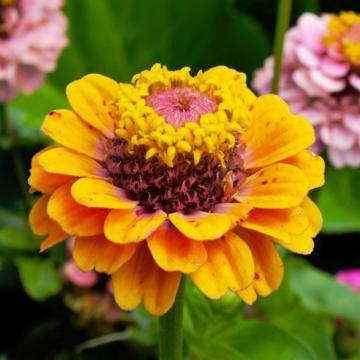Harvesting seeds from flowers is a rewarding practice that allows gardeners to grow their favorite blooms year after year. You can save money and preserve unique or heirloom flower varieties by learning the proper techniques for collecting, drying, and storing seeds.
When to Harvest Seeds
The best time to harvest seeds depends on the flower type and its blooming cycle, but generally, seeds are ready to be collected when the flowers have finished blooming and seed heads have fully matured. Signs that seeds are ready to harvest include:
- Seed Pods Browning: When seed pods or heads start to turn brown and become dry to the touch, it's often a good indication that the seeds inside are mature.
- Pods or Seed Heads Splitting: Some flowers, like poppies and snapdragons, will have pods that split open when seeds are ripe.
- Dry and Firm Seeds: Gently shake the flower head. If the seeds easily fall out and feel firm or hard, they are ready to be harvested.
Drying Methods
Proper drying is crucial to prevent mold and ensure seed viability. Here are some drying methods:
- Air Drying: After harvesting, spread the seeds on a paper towel, newspaper, or a mesh screen in a well-ventilated, dry area. Keep them away from direct sunlight, as it can damage the seeds. Turn them occasionally to promote even drying. Most seeds take about a week to dry completely.
- Paper Bag Method: Place the seed heads in a paper bag for flowers that produce fine seeds (like poppies). Leave the bag open in a cool, dry place. As the heads dry, the seeds will naturally fall to the bottom of the bag.
- Hanging: For plants like marigolds or sunflowers, you can cut the entire flower head and hang it upside down in a dry, cool place. Tie a paper bag around the heads to catch seeds that fall as they dry.
Storing Seeds
Proper storage extends seed life and maintains their viability.
- Use Airtight Containers: Store dried seeds in airtight containers, such as glass jars, plastic containers, or paper envelopes.
- Label Containers: Always label your containers with the plant's name and harvest date. Including details like the plant's color, height, or bloom time can help plan future gardens.
- Cool, Dark Storage: Keep seeds in a cool, dark place, such as a basement, closet, or refrigerator. Ideal storage temperatures are around 32-41°F (0-5°C).
Tips for Successful Seed Harvesting
- Harvest on a Dry Day: This helps keep seeds dry which prevents modld from forming during storage.
- Avoid Premature Harvesting: Resist the urge to collect seeds too early. Seeds need time to mature on the plant, which increases their chances of successful germination.
- Clean the Seeds: Before storing, remove any chaff (dried plant material) to prevent mold growth.
- Test for Viability: Float seeds in water; viable seeds usually sink. Discard seeds that float, as they may not germinate.
- Practice Seed Saving from Open-Pollinated Varieties: Heirloom or open-pollinated flowers will produce true-to-type plants from harvested seeds. Hybrid flowers may not grow true to their parent plants.
Check out this video that demonstrates collecting seeds from flowers.

